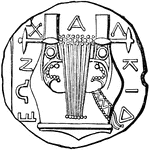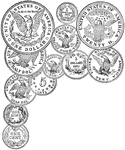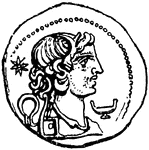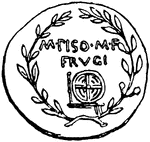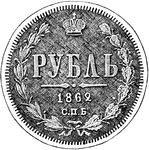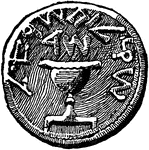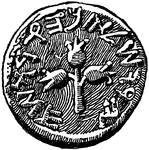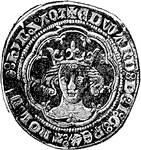
Obverse Side of Groat of Edward III
"Obverse. Groat of Edward III. GROAT. An English silver coin, of the value of fourpence, first issued…

Reverse Side of Groat of Edward III
"Reverse. Groat of Edward III. GROAT. An English silver coin, of the value of fourpence, first issued…
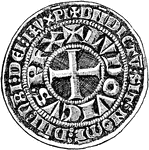
Obverse Side of Gros Tornois
"Gros Tournois of Louis IX. GROS. A coin of relatively large size: applied to silver coins of various…

Reverse Side of Gros Tornois
"Gros Tournois of Louis IX. GROS. A coin of relatively large size: applied to silver coins of various…

Groschen
"Groschen of Hanover, 1866. GROSCHEN. A small silver coin of various kinds in Germany from the fourteenth…

Guinea of Charles II
An English gold piece, struck during the reign of Charles II. They are called guineas because they were…

Gulden
"Silver gulden of William III., King of the Netherlands, 1867. GULDEN. One of several gold coins in…
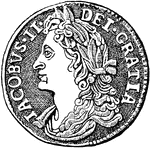
Obverse Side of Gun Money
"Obverse. Gun-money. Half-crown, 1689. GUN-MONEY. Money of the coinage issued by James II in Ireland…
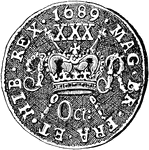
Reverse Side of Gun Money
"Reverse. Gun-money. Half-crown, 1689. GUN-MONEY. Money of the coinage issued by James II in Ireland…
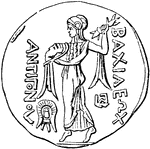
Coin of Minerva
"Minerva is often represented on gems and coins, hurling the thunderbolts of Jove. The following cut,…
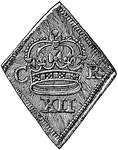
Newark Siege Piece - Obverse
"A coin, generally of unusual shape and rude workmanship, issued in a town or castle during a siege,…
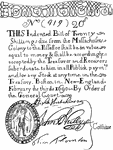
First American Paper Money, 1690
In 1690, The Massachusetts Bay Colony issued the first paper money in the colonies, called Colonial…

Pine-Tree Shilling
The Pine-Tree Shilling. This is a fac-simile of the first money coined in America. The mint-master,…

Roman Coins (Denarius)
An illustration of a roman coin (denarius). The left side represents the laurel-crowned head of Titus.…

Sceat, an Early Anglo Saxon Coin
"Specimens occur in gold, but most frequently in silver. Their average weight is 15 grains, and they…

Sestertius
The sestertius or sesterce was an ancient silver coin during the Roman Republic and the Roman Empire.
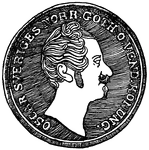
Skilling Coin - Obverse
"A money formerly used in Scandinavia and northern Germany, in some places as a coin and in others as…

Skilling Coin - Reverse
"A money formerly used in Scandinavia and northern Germany, in some places as a coin and in others as…
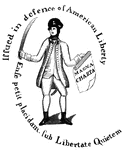
Treasury Note
"Reverse of a Massachusetts Treasury note. This is a fac simile of the device on the back of one of…
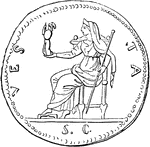
Coin of Vesta
"Represents Vesta seated on a throne, with the Palladium of Rome in her hand." — Anthon, 1891







